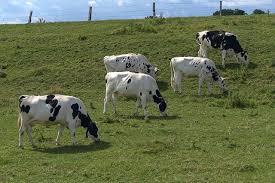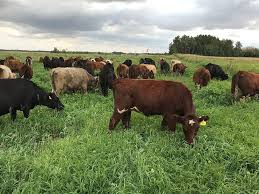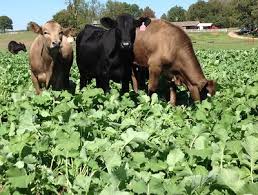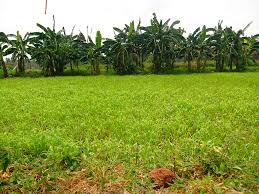Pasture production is crucial to the development of any livestock enterprise, especially where profit gain and environmental sustainability are the primary goals. Nature has designated plants as the primary producers of energy for all animals, including humans.
A direct or indirect relationship exists between pasture species and livestock performance, depending on how the pasture is managed.
While ruminant animals such as cattle, sheep, and goats can graze or browse the pasture, other animals like pigs, poultry, rabbits, and equines (donkeys and horses) are capable of ingesting some amount of fibrous forages.
These fibrous materials ferment in the caeca and provide energy needed for physiological functions.
Read Also: Sheep and Goat Housing Complete Guide
Definition of Pasture in Livestock Feeding

Pasture can be defined in different ways, depending on the intended purpose:
- Pasture is an area of land occupied with forage plant species, either naturally occurring or intentionally planted, for the purpose of supplying quality feed to livestock in appropriate quantity.
- It may also refer to any forage species that serve as valuable livestock feed.
- Additionally, it can mean the act of feeding—grazing or browsing animals on pasture plants.
Classification of Pasture Plants Based on Growth and Structure

Pasture plants can be grouped into the following categories:
1. Grasses: These belong to the family Gramineae and are known for their high energy content, low crude protein, rapid growth, cylindrical stems, and fibrous roots. Leaves have parallel venation, and the stems are typically hollow. Seeds are light and small. Related members include maize, millet, sorghum, barley, and rye.
2. Legumes: These fall under three families—Mimosoideae, Caesalpinoideae, and Papilionaceae classified based on flower structure. They are herbaceous with broad leaves and net-like venation. Flowers usually grow at the terminal buds but may also appear on auxiliary branches, producing seeds in pods. Examples include Centrosema pascourum, Alysicarpus varginalis, and Mucuna pruriens.
3. Grazed Plants: These are short herbs eaten with both stems and leaves. Examples are Brachiaria ruziziensis, Sorghum almum (Columbus grass), Arachis pintoii, and Digitaria smutsii.
4. Browsed Plants: These woody plants are fed upon for their leaves and twigs, while the main stem remains uneaten. Examples include Leucaena leucocephala, Gliricidia sepium, and Gmelina arborea.
5. Annuals: These complete their life cycle within one growing season and survive the dry period as seeds. Examples are Chloris gayana, Brachiaria mulato II, Pennisetum purpureum, and Hyparrhenia rufa.
6. Biennials: These require two seasons to complete their life cycle—one for vegetative growth and the other for reproduction. Examples include Panicum maximum (Elephant grass), Andropogon tectorum (Southern Gamba grass), and Cynodon dactylon (Bermuda grass).
7. Perennials: These live for several years, producing flowers and seeds annually without dying. Examples are Gmelina arborea, Ziziphus mauritiana, Ficus thonningii, and Acacia albida.
8. Weeds: These are unwanted plants that invade an area without being planted. Examples include Sorghum bicolor, Amaranthus spinosus, and Tridax procumbens.
Read Also: Guide On How To Increase Goats Milk
Common Forage Crops Used in Livestock Feeding in Nigeria

The most widely used forage crops in livestock feeding in Nigeria include:
- Maize plant (used in silage preparation)
- Sugar beet (used in hay and silage production)
- Sorghum almum (Columbus grass)
- Lablab purpureus (Lablab)
- Andropogon gayanus (Northern Gamba grass)
- Andropogon tectorum (Southern Gamba grass)
- Hyparrhenia rufa (Shuchi grass)
- Pennisetum typhoides cv Maiwa
- Stylosanthes guianensis cv Schofield stylo
- Stylosanthes hamata cv Verano stylo
- Brachiaria decumbens (Signal grass)
- Digitaria smutsii (Woolly finger grass)
- Gliricidia sepium (Almond blossom)
Pasture Weeds and Their Impact On Productivity
When pastureland is not managed over time, weeds are likely to invade. These weeds may be controlled manually through hand-pulling or cutting with cutlasses. Alternatively, herbicides either pre-emergence or post-emergence can be applied during pasture establishment, particularly to combat broad-leaved weeds.
Weeds reduce pasture quality when they dominate a large portion of the land and compete fiercely with forage plants for space, nutrients, sunlight, and moisture.
Examples of common pasture weeds in Nigeria include:
Amaranthus caudatus (Waterleaf), Crinum ornatum (Lily), Solanum incanum (Garden egg), Cyperus rotundus, Kyllinga species (Nut grass), and Cucurbita maxima–C. pepo (Pumpkin).
This article explains the meaning of pasture and classifies various pasture plants based on their characteristics. It also outlines common forage crops used in Nigerian livestock feeding systems and highlights the types and effects of weeds in pasturelands.
Do you have any questions, suggestions, or contributions? If so, please feel free to use the comment box below to share your thoughts. We also encourage you to kindly share this information with others who might benefit from it. Since we can’t reach everyone at once, we truly appreciate your help in spreading the word. Thank you so much for your support and for sharing!

